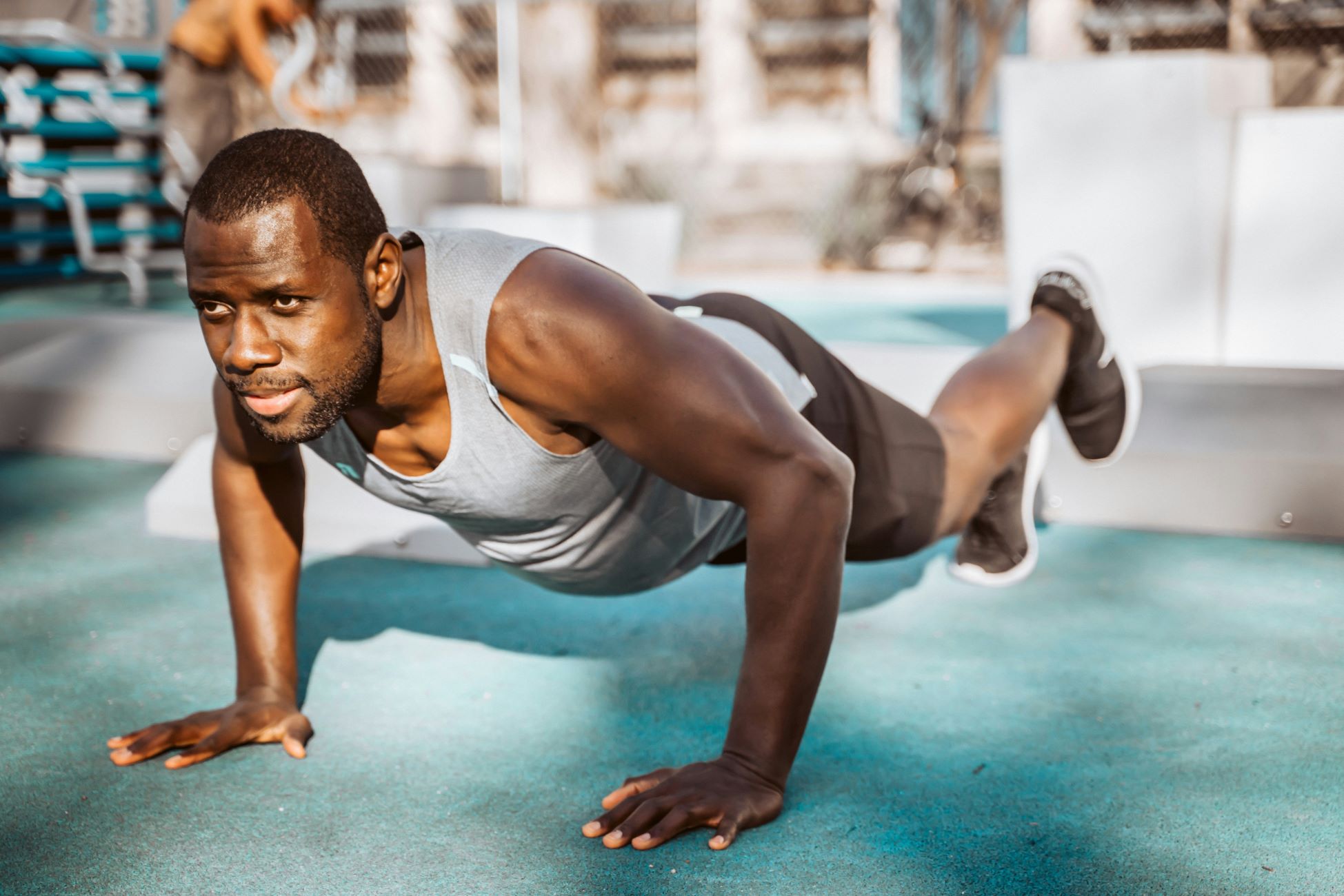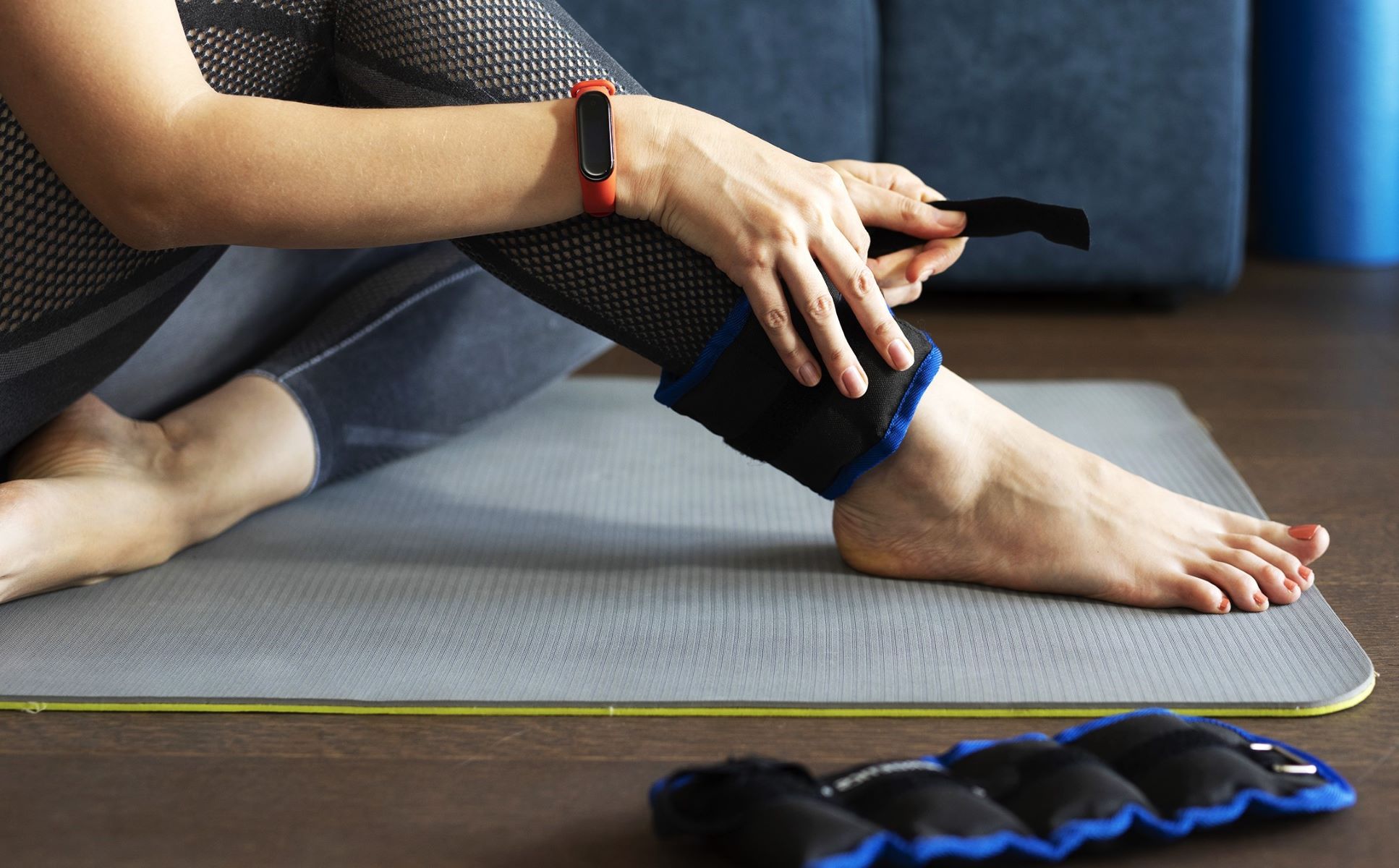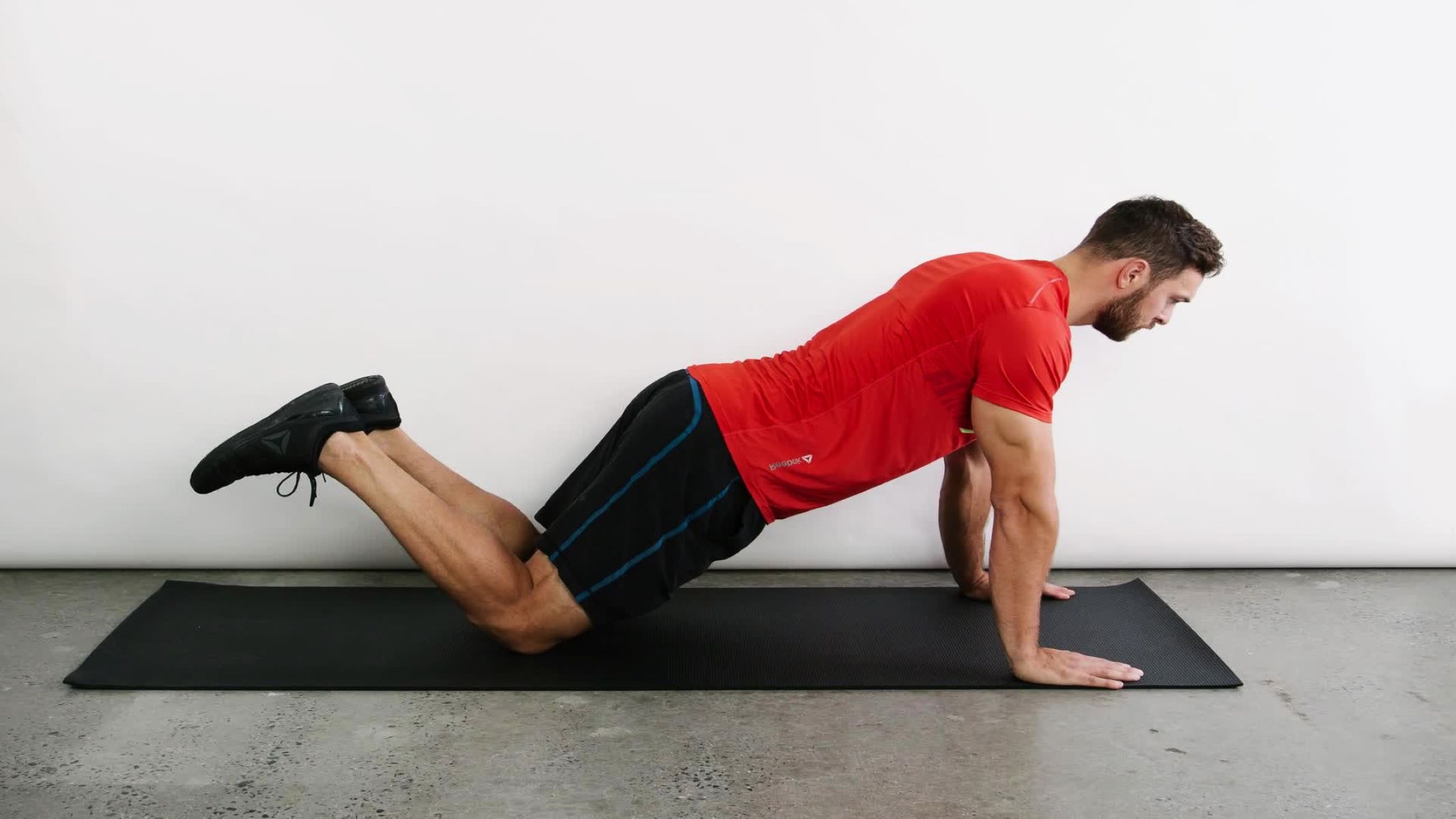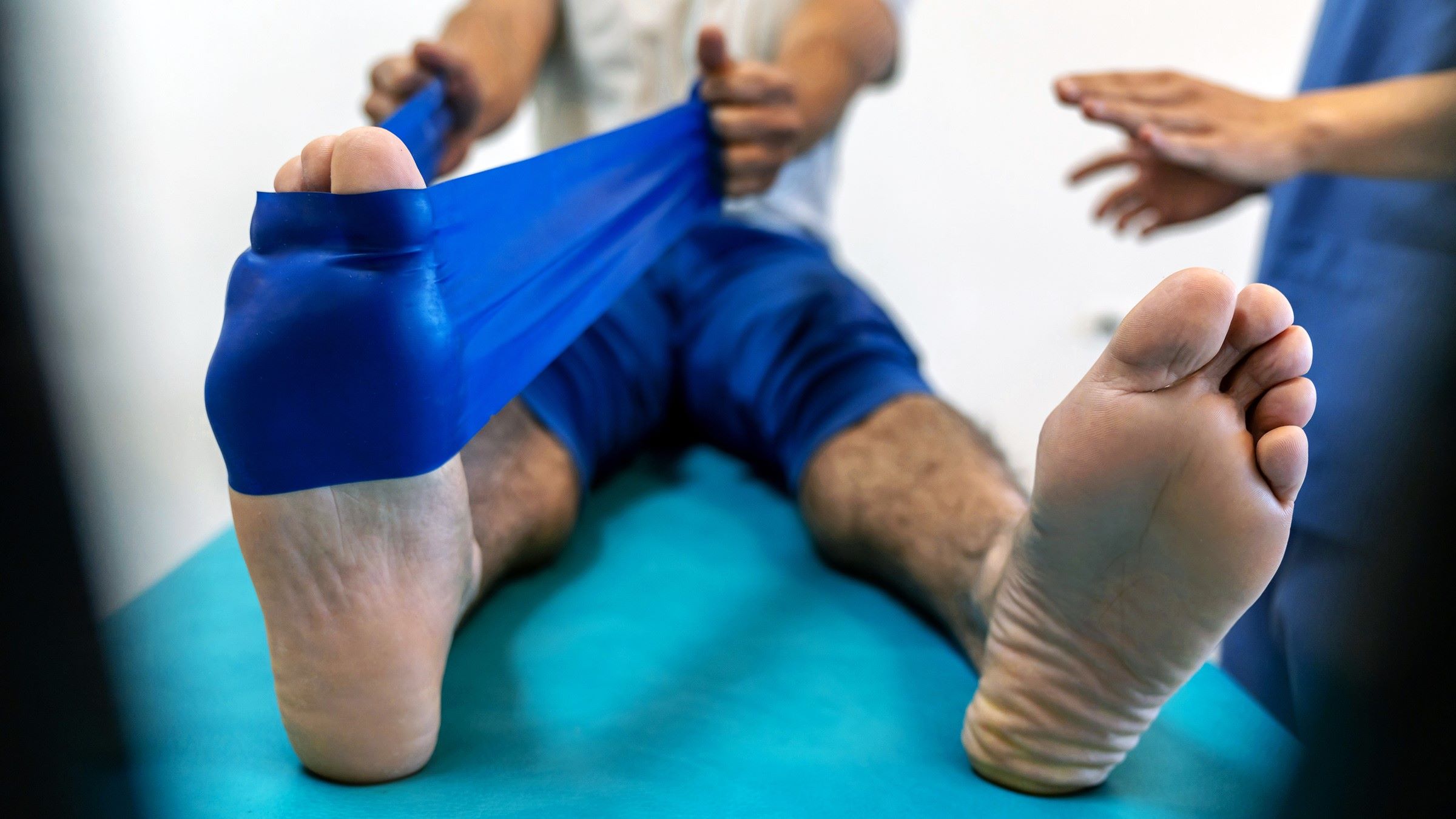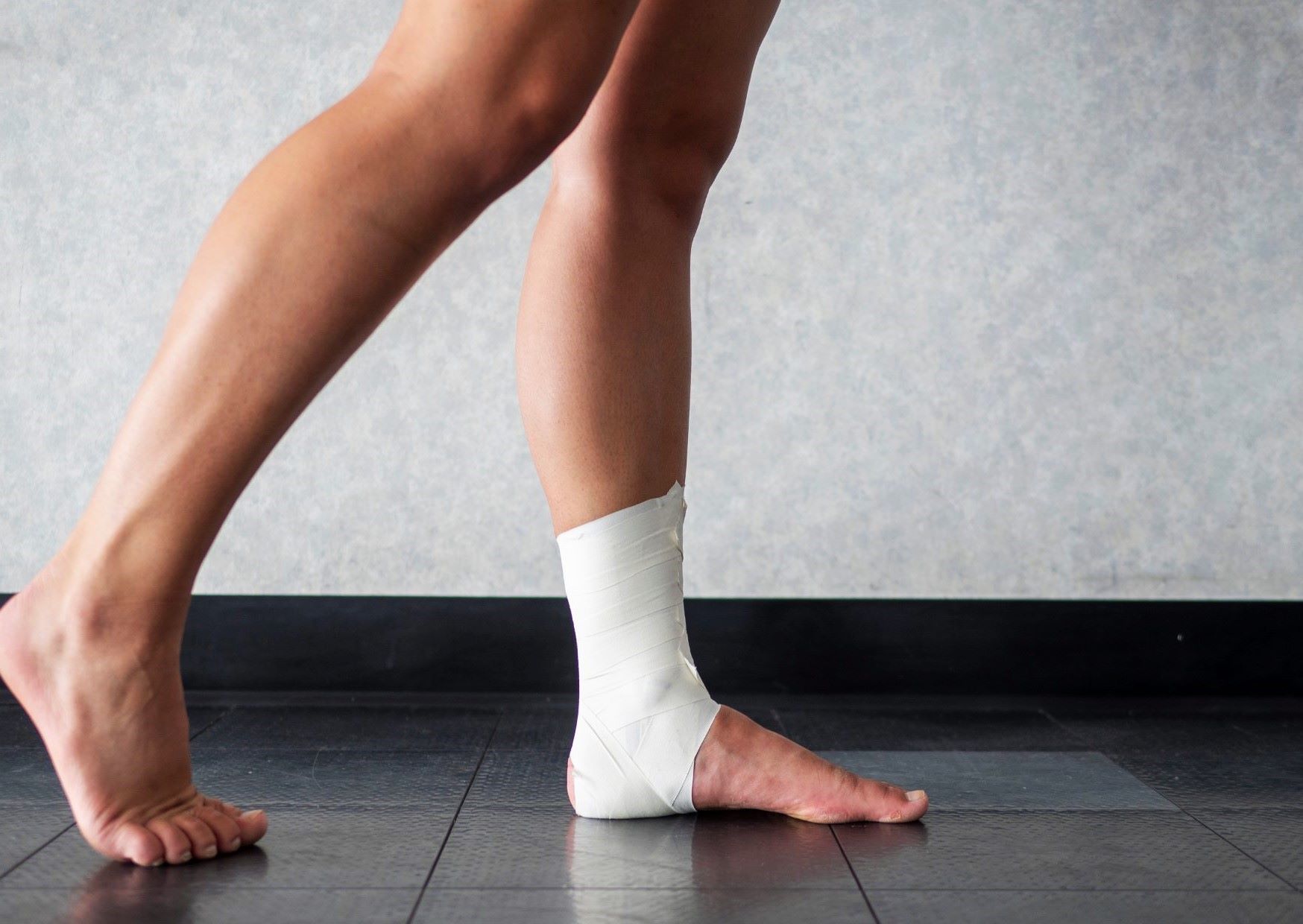Home>Training & Techniques>The Benefits Of Strengthening Your Ankles For Faster Running


Training & Techniques
The Benefits Of Strengthening Your Ankles For Faster Running
Published: March 3, 2024
Improve your running speed with ankle strengthening techniques. Discover the benefits of targeted training for faster, more efficient running.
(Many of the links in this article redirect to a specific reviewed product. Your purchase of these products through affiliate links helps to generate commission for Therunningadvisor.com, at no extra cost. Learn more)
Table of Contents
Importance of Ankle Strength in Running
Ankle strength plays a pivotal role in the performance and overall well-being of runners. The ankles serve as the foundation for every stride, absorbing impact and propelling the body forward. When the ankles are weak, the risk of injury increases, and running efficiency decreases. Therefore, prioritizing ankle strength is essential for runners looking to enhance their speed, endurance, and resilience.
Weak ankles can lead to a range of issues, including instability, reduced propulsion, and a higher likelihood of strains and sprains. By contrast, strong ankles provide a stable base, allowing for more powerful push-offs and improved balance during each stride. This not only enhances running speed but also reduces the risk of injuries that can sideline a runner's progress.
Furthermore, strong ankles contribute to better running form, as they provide the necessary support to maintain proper alignment and reduce excessive pronation or supination. This, in turn, can help prevent overuse injuries and discomfort in the feet, knees, and hips, allowing runners to maintain their training regimen without setbacks.
Incorporating ankle-strengthening exercises into a training routine can yield significant benefits. By targeting the muscles and tendons surrounding the ankles, runners can improve their overall stability and agility, leading to more efficient and powerful strides. Additionally, strong ankles can enhance proprioception, the body's awareness of its position in space, which is crucial for navigating uneven terrain and adapting to changes in running surfaces.
In essence, the importance of ankle strength in running cannot be overstated. It serves as the cornerstone of a runner's foundation, influencing performance, injury prevention, and overall running experience. By recognizing the significance of ankle strength and integrating targeted exercises into their training, runners can unlock their full potential and enjoy a more fulfilling and sustainable running journey.
Exercises to Strengthen Your Ankles
When it comes to enhancing ankle strength for running, targeted exercises can make a significant difference in a runner's performance and resilience. By incorporating specific movements that engage the muscles and tendons surrounding the ankles, runners can effectively build stability, mobility, and endurance in this crucial area. Here are some key exercises to strengthen your ankles and elevate your running game:
1. Calf Raises
Calf raises are a fundamental exercise for strengthening the muscles in the lower legs, including the calves and ankles. To perform calf raises, stand with your feet hip-width apart and slowly raise your heels off the ground, lifting your body upward. Hold the raised position for a moment before lowering your heels back down. This exercise targets the calf muscles and the Achilles tendon, promoting ankle stability and strength.
2. Ankle Circles
Ankle circles are a simple yet effective exercise for improving ankle mobility and flexibility. While seated or standing, lift one foot off the ground and rotate your ankle in a circular motion, first clockwise and then counterclockwise. This movement helps to increase blood flow to the ankles and promotes joint mobility, aiding in injury prevention and overall ankle health.
3. Resistance Band Exercises
Utilizing resistance bands can provide targeted resistance to the ankle muscles, aiding in their strengthening and conditioning. One effective exercise involves securing a resistance band around a stable object and looping the other end around the foot. With the band providing resistance, perform dorsiflexion and plantarflexion movements, targeting the muscles responsible for ankle flexion and extension.
4. Balance Exercises
Balance exercises, such as single-leg stands or using a balance board, can significantly improve ankle stability and proprioception. By challenging the body's balance and spatial awareness, these exercises engage the ankle muscles and help develop the necessary strength to maintain stability during running, reducing the risk of ankle-related injuries.
5. Toe Taps
Toe taps are a dynamic exercise that targets ankle strength and agility. While standing, lift one foot slightly off the ground and tap the toes on the floor in front of you, alternating between feet. This exercise engages the ankle muscles and promotes quick, controlled movements, which are essential for maintaining stability and responsiveness while running.
Incorporating these exercises into a regular training routine can yield substantial benefits for runners seeking to strengthen their ankles. By consistently engaging in targeted ankle-strengthening exercises, runners can enhance their running performance, reduce the risk of ankle injuries, and cultivate the stability and resilience needed to tackle various terrains and challenges. With dedication and persistence, these exercises can contribute to a solid foundation of ankle strength, empowering runners to reach new levels of speed, endurance, and overall running proficiency.
How Strong Ankles Improve Running Speed
Strong ankles play a pivotal role in enhancing running speed and overall performance. When the ankles are robust and well-conditioned, they contribute to a more efficient and powerful running stride, ultimately leading to improved speed and agility. Here's how strong ankles directly impact running speed:
-
Enhanced Propulsion: Strong ankles provide a solid foundation for push-off during each stride. The muscles and tendons surrounding the ankles, including the calf muscles and Achilles tendon, work in synergy to generate forceful propulsion. This propels the body forward with greater momentum, allowing for faster and more explosive strides.
-
Improved Stability and Balance: Ankle strength contributes to better stability and balance, essential elements for maintaining a consistent and swift running pace. When the ankles are strong, they provide the necessary support to withstand the impact forces of each step and maintain proper alignment. This reduces energy loss due to excessive movement and instability, enabling runners to channel their energy into forward motion, thus increasing their speed.
-
Efficient Energy Transfer: Strong ankles facilitate efficient energy transfer from the lower body to the ground. As the feet push off the ground, the strength and stability of the ankles ensure that the energy generated from the muscles is effectively transferred, propelling the body forward with minimal energy dissipation. This efficient energy transfer allows for a smoother and more powerful running stride, contributing to increased speed and endurance.
-
Reduced Risk of Fatigue and Injury: Strong ankles help mitigate the impact of repetitive stress on the lower extremities. By providing stability and support, they reduce the strain on the feet, knees, and hips, which can otherwise lead to fatigue and discomfort. Additionally, strong ankles are less prone to injuries such as sprains and strains, allowing runners to maintain their training regimen without setbacks, ultimately contributing to improved speed and performance.
In essence, strong ankles are a fundamental component of running speed. They serve as the driving force behind powerful propulsion, enhanced stability, efficient energy transfer, and injury prevention. By prioritizing ankle-strengthening exercises and incorporating them into a comprehensive training routine, runners can harness the benefits of strong ankles to elevate their running speed and unlock their full potential on the track, trail, or road.
Preventing Injuries with Strong Ankles
Strong ankles serve as a formidable line of defense against a myriad of potential injuries that can impede a runner's progress and sideline their training. By fortifying the muscles, tendons, and ligaments surrounding the ankles, runners can significantly reduce the risk of common lower extremity injuries, ensuring a more resilient and sustainable running experience.
One of the primary benefits of strong ankles is their ability to mitigate the likelihood of ankle sprains, a prevalent injury among runners. Ankle sprains occur when the ligaments supporting the ankle joint are stretched or torn, often resulting from sudden twists or uneven terrain. However, with strong ankle muscles and enhanced stability, the ankle joint becomes more resistant to excessive movement and strain, thereby reducing the susceptibility to sprains. This fortification of the ankle's supportive structures can provide runners with the confidence to navigate challenging terrains and unexpected obstacles without the constant fear of potential injury.
Furthermore, strong ankles play a crucial role in preventing overuse injuries that commonly afflict runners. Conditions such as Achilles tendinitis, plantar fasciitis, and shin splints can arise from repetitive stress and strain on the lower extremities. However, by cultivating strength and resilience in the ankle muscles and tendons, runners can better absorb and distribute the impact forces generated during each stride, thereby alleviating the burden on other susceptible areas such as the feet, knees, and hips. This redistribution of stress helps to minimize the risk of overuse injuries, allowing runners to maintain their training consistency and performance without being hindered by chronic discomfort or debilitating conditions.
Moreover, strong ankles contribute to improved biomechanics and running form, which are essential for injury prevention. By providing a stable foundation and proper alignment, strong ankles help to mitigate excessive pronation or supination, reducing the strain on the surrounding joints and soft tissues. This, in turn, minimizes the risk of developing compensatory movement patterns that can lead to injuries in other areas of the body. Additionally, the enhanced proprioception and spatial awareness facilitated by strong ankles enable runners to adapt more effectively to changes in terrain and surface, further reducing the likelihood of missteps and potential injuries.
In essence, the preventive benefits of strong ankles extend beyond the ankles themselves, encompassing the entire lower kinetic chain. By fortifying this critical area, runners can safeguard themselves against a spectrum of injuries, empowering them to pursue their running goals with confidence and resilience. Through targeted ankle-strengthening exercises and a comprehensive approach to injury prevention, runners can cultivate the strength and stability needed to enjoy a fulfilling and sustainable running journey.
Read more: 7 Easy Exercises To Strengthen Your Joints
Incorporating Ankle Strengthening into Your Training Routine
Integrating ankle-strengthening exercises into a comprehensive training routine is a strategic approach that can yield substantial benefits for runners seeking to enhance their performance and resilience. By prioritizing the development of ankle strength and stability, runners can fortify their foundation, reduce the risk of injuries, and unlock their full potential on the track, trail, or road.
To begin, it is essential to incorporate ankle-strengthening exercises as a regular component of a well-rounded training regimen. By dedicating specific time and focus to these exercises, runners can effectively target the muscles and tendons surrounding the ankles, promoting strength, mobility, and endurance in this crucial area. This deliberate integration ensures that ankle strength is not overlooked or overshadowed by other aspects of training, emphasizing its significance in the overall running experience.
Moreover, varying the types of ankle-strengthening exercises can provide a comprehensive approach to fortifying ankle strength. By incorporating a diverse range of movements, such as calf raises, ankle circles, resistance band exercises, balance exercises, and toe taps, runners can engage different muscle groups and enhance overall ankle stability from multiple angles. This multifaceted approach contributes to a well-rounded development of ankle strength, addressing various aspects of ankle function and resilience.
Furthermore, aligning ankle-strengthening exercises with specific phases of training can optimize their impact on running performance. For instance, integrating these exercises during the off-season or base-building phase allows runners to focus on foundational strength and injury prevention, laying a robust groundwork for more intense training periods. Additionally, incorporating ankle-strengthening exercises into warm-up or cool-down routines can prime the ankles for optimal performance and aid in post-run recovery, contributing to overall running longevity.
In addition, integrating ankle-strengthening exercises into cross-training activities can provide a holistic approach to enhancing ankle strength. Activities such as yoga, Pilates, and strength training can complement traditional running workouts by targeting the ankle muscles and promoting overall stability and balance. This integrated approach not only diversifies training but also fosters a more resilient and adaptable musculoskeletal system, contributing to improved running efficiency and injury prevention.
Ultimately, by incorporating ankle-strengthening exercises into a comprehensive training routine, runners can cultivate the strength, stability, and resilience needed to elevate their running experience. This deliberate integration emphasizes the importance of ankle strength in the overall performance and well-being of runners, empowering them to pursue their running goals with confidence and longevity. With a dedicated focus on ankle strength as an integral part of training, runners can enhance their speed, endurance, and overall running proficiency, unlocking their full potential on their running journey.



